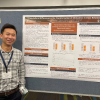Francesco H. Janzen, Rodolfo Pérez-Rodríguez, Omar Domínguez-Domínguez, Dean A. Hendrickson, Mark H. Sabaj, and Gabriel Blouin-Demers. “Phylogenetic relationships of the North American catfishes (Ictaluridae, Siluriformes): investigating the origins and parallel evolution of the troglodytic species.” Molecular Phylogenetics and Evolution, Pp. 107746. Publisher's Version Abstract
Insular habitats have played an important role in developing evolutionary theory, including natural selection and island biogeography. Caves are insular habitats that place extreme selective pressures on organisms due to the absence of light and food scarcity. Therefore, cave organisms present an excellent opportunity for studying colonization and speciation in response to the unique abiotic conditions that require extreme adaptations. One vertebrate family, the North American catfishes (Ictaluridae), includes four troglodytic species that inhabit the karst region bordering the western Gulf of Mexico. The phylogenetic relationships of these species have been contentious, and conflicting hypotheses have been proposed to explain their origins. The purpose of our study was to construct a time-calibrated phylogeny of Ictaluridae using first-occurrence fossil data and the largest molecular dataset on the group to date. We test the hypothesis that troglodytic ictalurids have evolved in parallel, thus resulting from repeated cave colonization events. We found that Prietella lundbergi is sister to surface-dwelling Ictalurus and that Prietella phreatophila + Trogloglanis pattersoni are sister to surface-dwelling Ameiurus, suggesting that ictalurids colonized subterranean habitats at least twice in evolutionary history. The sister relationship between Prietella phreatophila and Trogloglanis pattersoni may indicate that these two species diverged from a common ancestor following a subterranean dispersal event between Texas and Coahuila aquifers. We recovered Prietella as a polyphyletic genus and recommend P. lundbergi be removed from this genus. With respect to Ameiurus, we found evidence for a potentially undescribed species sister to A. platycephalus, which warrants further investigation of Atlantic and Gulf slope Ameiurus species. In Ictalurus, we identified shallow divergence between I. dugesii and I. ochoterenai, I. australis and I. mexicanus, and I. furcatus and I. meridionalis, indicating a need to reexamine the validity of each species. Lastly, we propose minor revisions to the intrageneric classification of Noturus including the restriction of subgenus Schilbeodes to N. gyrinus (type species), N. lachneri, N. leptacanthus, and N. nocturnus.

